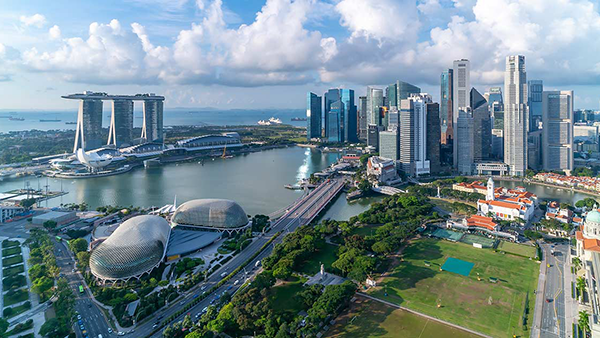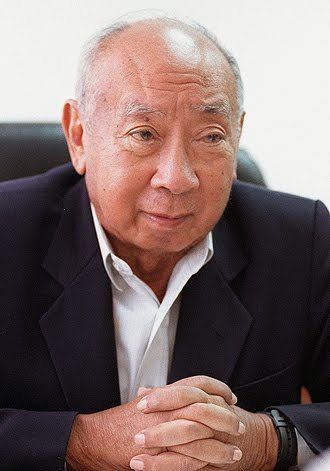How Singapore’s Founding Leaders Foresaw Today’s Economic Malaise Decades Earlier

As we near the celebration of Singapore’s 57th birthday come 9 August, it is opportune to recount the foresight and convictions of the nation’s early leaders that laid the foundations for Singapore’s achievements today. We will focus, in particular, on the history and considerations surrounding the issuance of the Singapore dollar.
Even after Singapore’s independence in 1965 from the Federation of Malaysia, both countries were in negotiations on maintaining a common currency – the Malaya and British Borneo dollar. This currency and its predecessors, the Malayan dollar and the Straits dollar, had been circulating currency for six decades in a Southeast Asia currency union (which included Sarawak, Brunei, and British North Borneo) since 1898.
However, the discussions between Malaysia and Singapore broke down on one point – Singapore wanted to keep its reserves with a Bank Negara branch in Singapore, but Malaysia had insisted on keeping Singapore’s reserves in Kuala Lumpur. Founding Prime Minister Lee Kuan Yew explained Singapore’s stance succinctly in a 1966 speech, “If we (Malaysia and Singapore) break (currency union) any time, my (Singapore’s) money is mine (Singapore’s).” In other words, Singapore’s reserves will not be held hostage should both countries go their separate ways.
"Singapore Is Finished"
The prospect of Singapore gaining independence and issuing its own currency was met with negativity in the news as most were accustomed to the six-decade currency union. In the same 1966 speech, Lee recounted the prevalent coffee-shop talk speculating that “Singapore is finished, because we have no natural resources.”
However, Lee posited that “it is not a matter of whether you have large natural resources or slender natural resources. It is a matter of whether you issue your notes as and when you like, or you issue your notes against backing.”
With an independent currency, Singapore also had to decide between retaining the Currency Board System (CBS) or adopting central banking finance. The CBS had the legal requirement to back the currency issue with 100% to 110% of overseas assets. For every dollar issued, there is a guarantee that there is that amount in foreign exchange or gold to back it.
As for central banking finance, the government has the option to borrow from the central bank should it be unable to tax the populace or borrow on the credit market. The central bank creates currency to finance the government’s debts, often without backing.
Asking a Cat to Look After Fish
Goh Keng Swee, Singapore’s first finance minister, recounted in a 1992 article that when the Monetary Authority of Singapore (MAS) was set up in 1971, the Chairman was by law the Finance Minister. World Bank experts had advised the then young Singapore government to have a separation of roles between the Finance Minister and the central bank’s Governor – like how the United States has implemented with the Secretary of the Treasury and the Chairman of the Federal Reserve. The intention was to resist a Finance Minister’s potentially incessant request for money to finance budget deficits.

Goh Keng Swee, architect of Singapore's economic,
education & defence policies
Goh said, “The World Bank believed that putting the Finance Minister (solely) in charge would be like asking a cat to look after fish.”
Goh felt that the World Bank’s anxieties were misplaced as “Singapore has always worked on the principle that government expenditure on education, defense, social and economic services, etc., must be paid for out of government revenues – taxes and fees. It is the Finance Minister’s prime duty to balance the budget and, if possible, accumulate a surplus for the rainy day. Successive Finance Ministers have been doing just this. They do not need an independent Central Bank Governor to persuade them not to run budget deficits.”
Regardless of how separate the powers of the Finance Ministry and central bank are in a central banking finance system, the Federal Reserve has monetized trillions of government debt today.
Goh Chok Tong, Singapore’s second prime minister, said in 1996 that “sometimes, the central bank is effectively nothing more than a printing press churning out currency notes for the Ministry of Finance. This must lead to inflation and hyperinflation. But I wonder if granting statutory independence to the central bank will, in itself, ensure macroeconomic stability. I would argue that having the right people in the government and in the central bank is the more effective answer. MAS has been able to maintain macroeconomic stability mainly because Singapore’s political leadership has set that as its mission.”
This was rather prescient since twelve years later, the US Federal Reserve would fire its printing presses to inundate the financial system with record amounts of currency following the 2008 Great Financial Crisis. Unfortunately, the money printing floodgates remain open today.
Distinguishing Fads From Values
Singapore’s founding leaders chose the CBS. Singapore became a sole exception as many newly independent states chose ‘freedoms’ central banking finance offered in the rapidly decolonized post-War years.
On 12 June 1967, the new Singapore dollar was issued on par and was interchangeable with the Malaysian ringgit* and the Bruneian dollar. It was also pegged to 0.290299g of fine gold with an equivalent value of 2 shillings and 4 pence in sterling pound (£1 = S$8.57, US$1 = S$3.06).
Goh Keng Swee also cited three reasons for choosing the CBS: “First, to inform the financial world that our objective was to maintain a strong convertible Singapore dollar. The second purpose was to inform our citizens that if they wanted more and better services, they must pay for these through taxes and fees. There is no free lunch here. Third, we wanted to indicate to academics, both local and foreign, that what is fashionable in the West is not necessarily good for Singapore. A perceptive mind is needed to distinguish the peripheral from the fundamental, transient fads from permanent values.”
He added that when gold convertibility of the US dollar was suspended in August 1971, none in the Singapore Cabinet “believed that Keynesian economic policies could serve as Singapore’s guide to economic well-being” and that financing budget deficits through Central Bank credit creation appeared as “an invitation to disaster”. Rather, “diligence, education and skills will create wealth, not Central Bank credit.”
Management of the Singapore dollar has since evolved into an exchange rate policy with a focus on managing the currency against a trade-weighted basket of major trading partners’ currencies. One feature of the CBS that was retained is the full backing of the currency-in-circulation by gold and foreign assets.
Singapore’s unwavering focus on charting a course that fits its environment has resulted in tangible results. Since the first Singapore dollar was issued in 1967, the currency now trades at £1 = S$1.68 and US$1 = S$1.38. The country has consistently run a current account surplus since the mid-80s, even through the 1997 Asian Financial Crisis, the 2008 Financial Crisis, and the recent Covid-19 Crisis.
Prophetic or History Repeating?
Goh Keng Swee’s 1992 article was almost prophetic of the disastrous economic outcomes of unlimited currency creation by a central bank to monetize government debt – a reality we know all too well today with the rounds of quantitative easing and monetary stimulus by modern central banks. Despite the trillions printed, we now have stagflation globally – a period of low growth and high inflation.
After gaining independence in 1965, it was not long before Singapore’s young government faced a similar environment with the stagflation of the 1970s. The founding leaders had the foresight to also purchase Singapore’s first gold reserves at USD 40 per ounce in 1968. This decision was validated when gold reached a record high of USD 850 by the early eighties before stagflation was defeated.
Coincidentally, in a largely under-the-radar move, Singapore topped up its gold reserves for the first time in two decades in May 2021. US inflation then was slightly over 5 percent, not the 40-year highs we are witnessing today.
Just as economic theories and their outcomes could be forecasted by many including the Singapore Cabinet decades ago, perhaps history is repeating and warning of a similar impending flight into gold.
*Only Singapore and Brunei dollars are interchangeable today as a result of the 1967 Currency Interchangeability Agreement. Malaysia pulled out in 1973.
